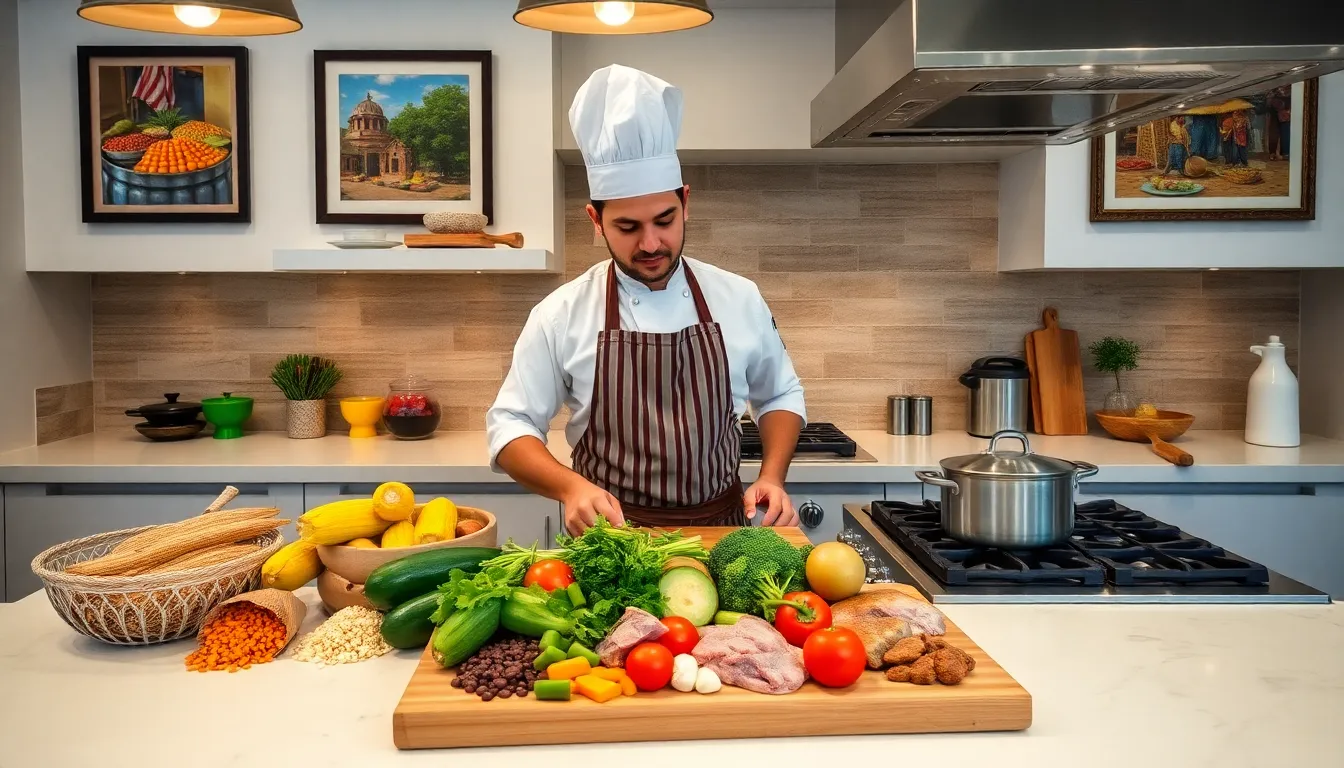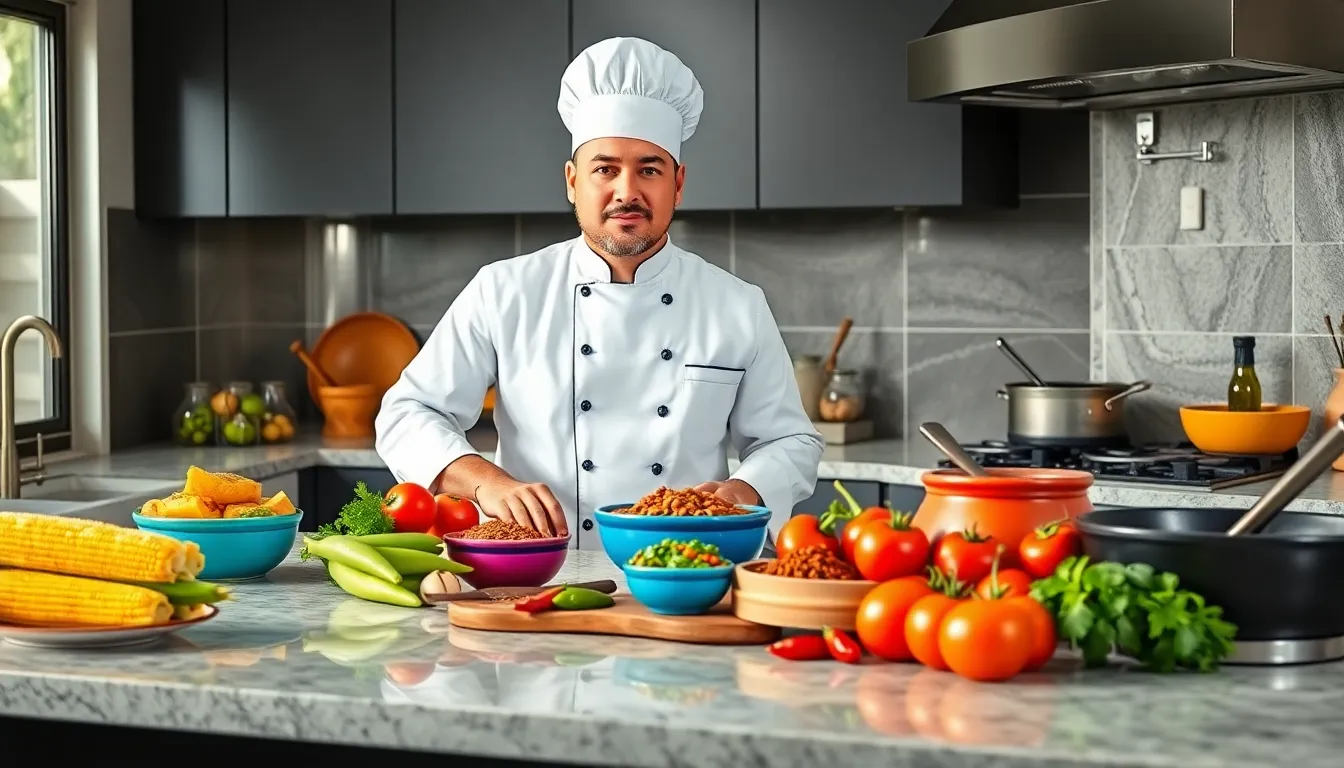Are you ready to spice up your culinary game? Mexican cooking isn’t just a feast for the senses: it’s a colorful tapestry woven with history, culture, and a few secret ingredients. Imagine yourself chaotically tossing spices into a bubbling pot, while your friends imagine you’re the next culinary sensation. Whether you’re an amateur cook or a seasoned chef, these techniques will bring authentic Mexican flavors right to your kitchen. Let’s immerse and unravel the delicious secrets of Mexican cooking techniques.
Table of Contents
ToggleHistorical Overview of Mexican Cooking

Mexican cooking is steeped in history that dates back thousands of years. Indigenous civilizations, such as the Aztecs and Mayans, laid the foundation by cultivating crops like corn, beans, and squash. These ingredients became staples and essential components of the cuisine. The arrival of Spanish colonizers in the 16th century introduced new elements like pork, chicken, and various spices, creating a culinary fusion that still resonates today.
The blending of cultures over centuries resulted in regional specialties, each telling its own story through the flavors and techniques employed. From the bustling mercados (markets) of Mexico City to the tranquil kitchens of Oaxaca, traditional recipes reflect a rich heritage that continues to evolve.
Essential Cooking Methods
Mastering Mexican cooking techniques means getting comfortable with several key methods that will elevate any dish. Here’s a breakdown:
1. Searing
Searing is a technique Don’t underestimate. It’s all about locking in flavor. Whether you’re cooking meats or vegetables, don’t shy away from that scorching hot pan. The caramelization brings depth to the dish that can’t be replicated.
2. Roasting
Roasting, particularly chilies, is a hallmark of Mexican cuisine. When chilies are roasted, they develop smoky undertones and incredible flavor depth. Toss those peppers on an open flame or inside your oven for a few moments, and watch as they transform into something magical.
3. Steaming
Believe it or not, steaming isn’t just for veggies. Think tamales. This method keeps food moist and allows for authentic flavors to meld beautifully. Just wrap those tamales in corn husks and let the steam work its magic.
4. Frying
Let’s not forget frying. Whether you’re making crunchy tacos or empanadas, frying gives food that satisfying crunch. But, it’s essential to control the oil temperature. Too hot and you’ll burn: too cool, and it will be greasy.
5. Blending
Mexican sauces like salsas and moles rely heavily on blending. Fresh ingredients, spices, and herbs should be pulsed together until they create a harmonious mix. A good blender or mortar and pestle will do the trick, allowing flavors to sing.
Traditional Ingredients and Their Uses
The heart of Mexican cuisine lies in its traditional ingredients. Here are some of the most significant ones:
Corn
Corn is sacred in Mexican cooking. Used to make tortillas, tamales, and countless other dishes, corn can be ground into masa to create different textures and flavors.
Chilies
From the spicy to the sweet, chilies bring heat and complexity. Varieties like jalapeños, poblanos, and serranos have unique profiles that transform dishes. Dried chilies like ancho and guajillo can add richness and depth too.
Beans
Beans are a staple protein source that adds heartiness to many meals. Black beans, pinto beans, and refried beans frequently appear in dishes, providing both nutrition and flavor.
Herbs and Spices
Cilantro, cumin, and oregano are just a few of the herbs and spices that round out the flavors. From fresh herbs in salsas to spices in moles, they add dimension to each bite.
Tomatoes and Onions
Essential base ingredients, both tomatoes and onions form the foundation for countless dishes, from sauces to stews. Their natural sweetness balances out spiciness and acidity.
Regional Variations in Cooking Techniques
Diversity is what makes Mexican cuisine phenomenal, and that diversity extends into cooking techniques.
Northern Mexico
In the north, cattle ranching influences dishes, with grilled meats and cheese-based recipes shining. Techniques like asado (open grilling) are prevalent.
Central Mexico
Central Mexico leans heavily on everyday staples like tacos and enchiladas, with a focus on techniques like stewing and frying, blending flavors and textures effortlessly.
Southern Mexico
Down south, particularly in Oaxaca, the focus shifts to ingredients like chocolate and different chilies. Techniques such as stone grinding for moles are traditional, allowing for flavors to marry in a unique way.
Yucatán Peninsula
The Yucatán’s cooking is influenced by Mayan traditions with techniques like marinating meats in citrus juices, giving dishes a distinct tropical flair.
Modern Adaptations of Mexican Cooking
With the world becoming more interconnected, Mexican cooking has witnessed a transformation. Gourmet restaurants are reinterpreting traditional techniques, using contemporary methods to create innovative dishes.
Sous Vide Cooking
This technique allows for precision in cooking meat while retaining moisture. Imagine a perfectly cooked pork shoulder that’s tender and bursting with flavor.
Fermentation
Modern chefs are also experimenting with fermentation, creating unique salsas or sauces that have complex flavors. Think spicy kimchi but with a Mexican twist.
Fusion Cuisine
Fusion has entered the scene, where tacos meet sushi or Mexican ingredients find their way into classic French dishes. This adaptation broadens the palate and introduces new layers to familiar techniques.
Tips for Mastering Mexican Cooking Techniques
Taking these techniques to the next level requires practice and a bit of savvy. Here are some nuggets of wisdom:
- Use Fresh Ingredients
Freshness matters in Mexican cooking. When ingredients are vibrant and full of life, flavors soar.
2. Don’t Rush
Let flavors develop. Slow cooking enhances tastes, and rushing can result in an underwhelming dish.
3. Experiment with Chiles
Different chilies bring unique flavors and heat levels. Don’t be afraid to mix and match.
4. Practice Makes Perfect
Like any craft, repetition helps. Try your hand at different techniques until they become second nature.
5. Ask Questions
Learn from others. Don’t hesitate to seek advice from seasoned cooks. They often have invaluable insights.





